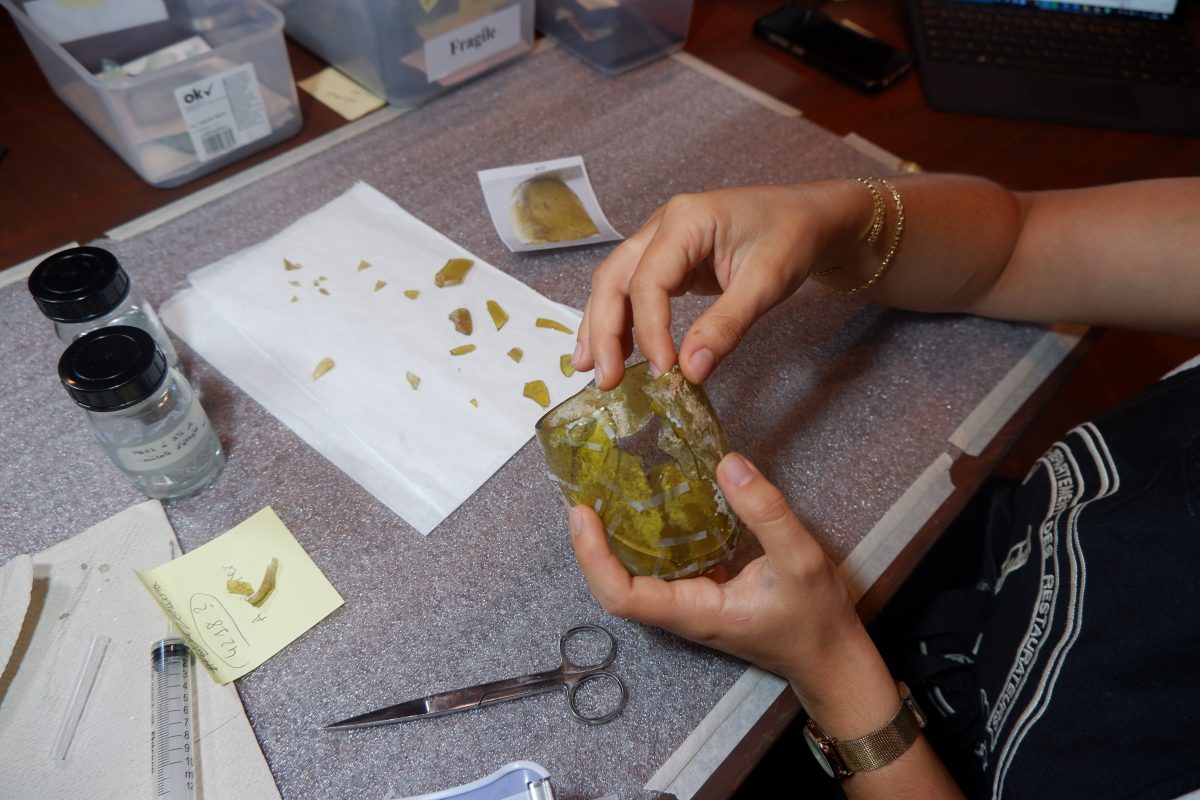
The British Museum in London, supported by the European Fine Art Foundation (TEFAF), announced today, July 27, that it will restore eight ancient glass vessels that were gravely damaged in the Beirut port explosion of 2020.
The damaged glass vessels, which belong to the Roman and Islamic periods, were on display in the Archaeological Museum at the American University of Beirut (AUB) when the blast shook the city. Located less than two miles from the site of the explosion, the museum sustained heavy damage to its windows and doors, like many other arts and cultural organizations throughout the city.
The eight artifacts were among 74 Roman, Byzantine, and Islamic period glass vessels that were displayed in a glass case at the museum. Most of the vessels were shattered beyond repair, with only 15 being identified as salvageable. Of these, only eight were deemed safe to travel to the British Museum’s conservation laboratories, where they will be pieced back together.

Claire Cuyaubère, a conservator from the French Institut national du patrimoine, oversaw the initial work by the AUB Archaeological Museum’s staff to carefully collect and categorize the shards of ancient glass from the mixed debris, which included glass from the display case and surrounding windows. In collaboration with the British Museum, she returned to Beirut in July 2021 to lead the effort to identify and match hundreds of fragments from each vessel and identify those suitable for shipment to London.
The task facing the conservators at the British Museum will not be easy, according to Sandra Smith, who helms the UK institution’s Collection Care department.
“Glass is a very difficult material to reconstruct, not least because the sherds flex and ‘spring’ out of shape and have to be drawn back under tension to restore the original shape,” Smith said in a statement.

The eight objects hold significant value to preserving the history of glass-blowing traditions in Lebanon of the 1st century BCE. It was a period that saw major advancements in glass blowing techniques, allowing for mass production of glass objects, once an elite commodity, for domestic use. According to the British Museum, six of the eight vessels were made by early glass-blowing technology and “show experimentation in function and form.” Two other vessels date to the late Byzantine and early Islamic periods, and may have been imported to Lebanon from neighboring glass manufacturing centers in Syria or Egypt.
Nadine Panayot, the curator of the AUB Archaeological Museum, said that the loss of many of these precious vessels represents a “priceless cultural loss.”

“The glass vessels have survived several disasters and conflicts over the last 2,000 years, only to be shattered by the port explosion in 2020,” said Jamie Fraser, a curator at the Ancient Levant and Anatolia at the British Museum. “Their restoration reflects the resilience of the staff at the Archaeological Museum, and the importance that Lebanon places on its rich cultural heritage.”
Once fully restored, the vessels will go on temporary display at the British Museum before they are returned to Beirut. This resolution stands in contrast with the museum’s reputation as a
known reservoir of colonial loots. Activists and governments worldwide have called repeatedly for the return of stolen artifacts, among them the Parthenon Marbles and a moai statue from Easter Island.
0 Commentaires